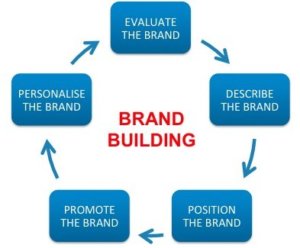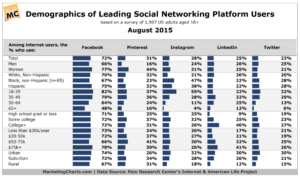Consultants get contacted for all sorts of – admittedly sometimes strange – requests for support from their clients.
However, when I get several people asking for help in the same area, I know something important is happening in the marketplace.
This is exactly what happened to me last month. The topic? Business Growth.
Most marketers will soon be leaving on their annual vacation and are realising just how little time they will have left to meet them when they return. Their brands have not performed as well as they had hoped this year and they are looking for a solution – fast!
No less than two of my current clients and four new companies have asked me for support in growing their businesses in just the past month! In particular, they have all said that one or more of their brands is stable – to be polite – and that they want to reverse the trend. Is this your situation too? If so, then I have a useful 7-step process that will bring rapid, if not instant change.
How to Stop a Declining Brand
OK, let’s get straight to the point with the most painful of situations first, that of a declining brand. A few years ago I wrote a popular post about using brand image metrics to understand what is happening with a brand and how to identify the best actions to take.
It is called “How to Stop Brand Decline: Following Brand Image is More than Meets the Eye.” I highly recommend reading it now, for a short but in-depth understanding of all the information that can be gleaned from a simple brand image study.
Almost all brands use their own brand image data in a very basic way, but there is so much more that can be done with the information, even without harnessing AI to do it for you!
In the above post I speak about the different kinds of attributes that should be measured and how to find them. They must cover the three aspects of customer benefits, namely:
- Rational, functional benefits
- Emotional, subjective benefits
- Relational, cultural benefits

However, what is even more important is how you analyse the data once you have it. I suggest looking at, as a minimum:
- Total and splits by demographics – gender, age, location etc
- Segments as you have defined them – attitudes, values, motivations etc
- Steps of the customer journey – aware, consider, try etc
There are many other analyses I use when working with my clients. Let me know if you need some help in getting more value from your own brand image metrics, I’d love to help.
Changes in your Brand image are just one of the things that you should look at when you are trying to understand why your business is flat, or even worse, declining. It’s one of the best kept secrets to brand growth!
Let’s now look at some of the others.
The Typical MBA Five Steps to Brand Building
Most MBA students are taught a five-step process for brand building, at least in theory anyway. They are:

- Describe: This is done through a product’s logo as well as its description on packs and other communications’ material. A successful brand will describe what it is through a consistent look, feel, tone, colours, symbols and messaging. This then builds to its brand equity which forms in the minds of customers both current and potential.
- Position: A brand needs to differentiate itself from its competition with some unique value. This can be done through its packaging, colour, aroma, distribution or another element that can set it apart. Using them to position the brand will provide customers with a reason to believe and to buy.
- Promote: Promotion can take numerous forms and channels, such as video, social media, TVCs (Television & Cinema), print ads or online advertising. It can include straightforward advertising and promotions, but also customer reviews, retail offers, websites etc. All of these will increase the brand’s awareness, hopefully spontaneous recall, as well as improved perception.
- Personalise: Several books have been written about people “loving” brands. While I think this is a bit of a stretch, building strong loyalty and a solid fan base is important. With so much choice available today, personalisation and individualisation have become essential characteristics in many categories. They make people feel closer to the brand through increased resonance and a perception of importance. These are two of the essential ingredients that build fans / followers.
- Evaluate: This is in fact both the last and first step to successful brand building. It is important that a company keeps on monitoring and reviewing the performance of its products, services and brands. Hence evaluation & review of a brand is an essential element of brand building.
While these five steps aren’t wrong, I believe that we can all do a whole lot better. As I said above, this is the theory, but I imagine that you are an expert or at least a professional, who already understands just how much effort goes into brand building. There are far more than these five simple steps!
When I realised that there is a lot missing from this standard list, I decided to expand it, but not too much so it remains manageable. However, my clients get a far more detailed process, as I am sure you can imagine. (Contact me to learn more)
Did you notice that the MBA list is all about the product or service, and that there is nothing mentioned about the customer or consumer? Big mistake!
So here is my process for brand building, a shortened version of the one I use when working with my clients. It succeeds whether your brand is a product or service, new or established, local or global. Take a look and let me know what you think. Is there something important I have forgotten that you do? Let me know in the comments and I’ll send you a free copy of my book “Secrets to Brand Building.”
My 7 Secrets to Business Growth
1. Gather as much information as you can about the brand
You already have far more information than you realise! Start by gathering as much information as you can find and bring it all together.
In addition to brand image and equity measurements, you need trend information on shares, distribution, stock levels, customer penetration and profiles. Look for changes in the trends and identify where and when they happened. The why will come later.
This first analysis is the equivalent to an autopsy after death – but hopefully you are reacting long before your brand is on life-support!
2. Identify the category in which you are playing.
This is the category from the customers’ perspective, not the industry definition your business association or retail audit supplier uses. Talk to customers if you can, or watch and listen to discussions on social media.
These exchanges will often mention comparable brands, suggestions for switching etc. All this will provide a better indication of the category than your industry knowledge sources ever will.
3. Understand your customers and talk to them – a lot!
I already mentioned speaking with your customers to understand the category you are in. But I want you to make a habit of speaking to your customers – both current and potential – on a weekly, and ideally daily basis.
For a simple start, set up Google alerts for your brand, category and customer groups, so you are following what is happening on the web. If you haven’t already done this, stop reading and do that NOW! It’s that important.
If you are a regular follower of this blog, then you will know that we promote – and our clients heavily use – C3Centricity’s 4W™ Template to store everything we know about our customers. You can download a free workbook including the template HERE.
4. Define your USP and desired image
Now you know the category in which you are competing and what customers want, verify whether your brand has a USP (Unique selling proposition) and an appropriate image and equity.
The description of your brand should include functional, emotional and societal benefits as mentioned above. To learn more about identifying these, and how to measure all aspects of your brand image, personality and equity, read “Brand Image, Equity, Personality & Archetypes: What Every Marketer Needs to Know.”
5. Develop a Big Idea on which to communicate
Once you have your USP it’s time to develop a big idea on which to communicate it. Big Ideas should be based on a relevant insight about your customers. (You do have one don’t you?)
For an improved process that delivers truly actionable insights, please check out“Customer Centricity is Today’s Business Disruptor (Insights are its Foundation).” This post details the exact process my clients use to develop insights they can easily and quickly harness to develop their own Big Idea with their advertising agency.
Here are a few examples; the first two are interesting in that two brands in different categories have used the exact same insight to come up with their own Big Ideas :
- Persil. Insight – “I want my children to experience everything in life, even if they get dirty.” Big Idea – Dirt is Good.

- Nido. Insight – “I want my children to experience everything in life, even if they get dirty.” Big Idea – Let them grow, let them go.

- Mastercard. Insight – “Life isn’t about what I buy, but about the relationships I have with the people I care about, and the special moments that I can share with them.” Big Idea – Mastercard helps you deliver priceless experiences.


- Jillz. Insight – “I want to drink alcohol on a night out, but I don’t like beer, and wine is too variable in quality.” Big Idea – A fresh drink from the tap for elegant women.


- Philadelphia soft cheese. Insight – “Food is delicious, but I don’t want to get fat (Butter vs Cream Cheese) Big Idea: Indulge your desire with less calories.

Hopefully these examples have inspired you to review the insight and big idea for your own brand. If you think you have a great example why not share it below?
6. Promote the brand where and when your customers are
This is the step that seems to be difficult for so many brands. They think that by advertising on digital media they will get their message across. But there are (at least) two things wrong with this approach.
Firstly, are your target customers actually online and if so, where? Pinterest may be perfect for a fashion or cosmetic brand but not for many other industries. The graph below show the usage by demographics for the US market. Perhaps you should take a look at your own statistics to check that social media and particularly the current channels you are using, are optimal for your brand?


7. Measure your success
Peter Drucker was so right when he said:
“What gets measured gets managed.”
So you clearly have to measure what you have been doing, so you understand what is working and what is not. But what metrics should you choose?
The data you should be following will help you to assess whether or not you are meeting the objectives for your brands. Therefore start by looking at what you were planning to improve and then choose the appropriate metrics to follow the changes you made.
I would also recommend this short read: “How to choose your KPIs.”
Next Steps
So you’ve gone through all seven steps and your brand is showing signs of stabilising if not actually declining. Great! So what’s next? Well you start by prioritising the actions you need to take to correct the weaknesses you have found. Define the tactics and strategies you will need and put your action plan into effect.
Then? Well, you start at step 1 and go through the process again! You see brand building is a never ending virtuous circle.
If you have specific questions relating to any of the seven steps, or if some other area of brand building is challenging you at the moment, then why not book a complementary advisory session? I love to help and that one call could solve your issue immediately, so why wait in torment? Be confident that we can quickly move your business forward together!



